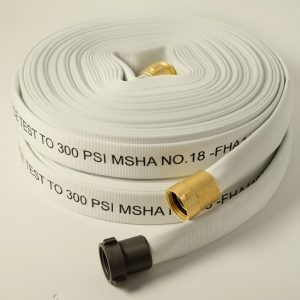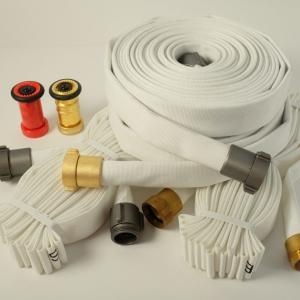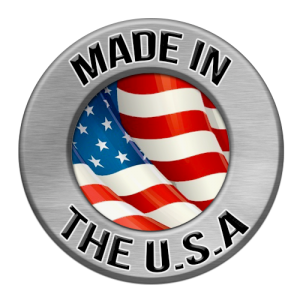Single Jacket Fire Hose
Abrasion-resistant, heavy-duty single jacket fire hose provides the durability you need for applications requiring prolonged storage.
Manufactured per NFPA 1961, Factory Mutual, and Underwriters Laboratories (UL) standards, single jacket fire hose assemblies feature spun polyester yarn that offers superior strength and wear characteristics.
Couplings for single wall hoses are available in expansion ring-threaded aluminum or brass, Storz, shank-threaded, or cam lock styles.
Choose a category of single jacket fire hose below to learn more, or select a product for additional details.
Fire Hose Jackets: Single vs. Double
Find yourself wondering “What is the difference between single and double jacket fire hose?”
Simply put, the main difference between these two hose types is that single jacket fire hose has a single layer of spun polyester fibers wrapping the rubber hose, while double jacket hose has two layers. This difference makes each type of fire hose suited for different applications.
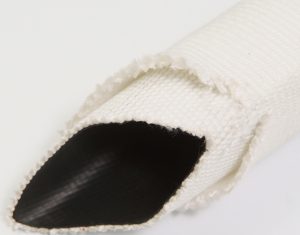
Knowing the distinction between single and double jacket fire hoses is essential to determining what is best for your project and application. Consider the following:
- Single jacket, with its single layer, is better suited for periodic or temporary use, as well as long-term storage.
- Double jacket fire hose is costlier but more durable, with better wear.
Fire Hose Construction
To understand how the two hose types differ, it helps to know how they are constructed. Single jacket hose and double jacket hose are made up of the same two components: The inner lining and the outer jacket(s).
The inner lining in a modern fire hose is a single ply of EPDM rubber. The characteristics of EPDM rubber are its durability and resistance to chemicals. The rubber lining itself, although designed with a tensile strength of 1800 PSI, will not hold fluid pressure. Without a jacket, the tube itself would essentially blow up like a balloon and burst.
To create the hose assembly, the linings are inserted and pulled through the jackets. They are then subjected to a steam vulcanizing process that bonds the jacket to the lining. The woven jacket consists of ring spun polyester yarns that are engineered to resist abrasion, mold, and mildew. The jackets are woven on large circular looms specific to the size of the fire hose they will ultimately become.
So what is a hose jacket used for?
The jacket gives the hose its strength and pressure rating. While the majority of jacketed hose is white, there are also a variety of colors available. To achieve coloration, the jacket is impregnated with a dye, also known as hypalon coating.
The difference between single jacket and double jacket fire hoses is the number of polyester jackets. The double jacket hose has an extra layer of woven fabric that boasts a higher wearability in comparison to the single jacket hose. It has an impressive burst test of 1,200 PSI and a 400 PSI service test.
In comparison, a single jacket fire hose is burst tested to 900 PSI. In order to meet NFPA requirements, single jacket hose must be service tested annually to 300 PSI.
Pros and Cons of Double and Single Jacket Hose
Although the double jacket hose is more costly than the single jacket, the extra layer helps protect it from burns, wear, and other damage. As a result, its service life is double that of its single jacket counterpart.
However, if you aren’t using the hose for a heavy-duty application, or if the need is temporary, you may choose the more economical single jacket hose. It’s also a little lighter, which is important in situations when the hose must be carried. For that reason, single jacket hoses are often used in forestry and for wildland fires.
Types of Single Jacket Fire Hose
There are many types of single jacket hoses. Each type has its own construction and unique application.
1. Rack and Reel

Rack hose assembly with single jacket construction.
A rack and reel fire hose is a single jacket hose manufactured to meet a specific application. Hospitals, airports, hotels, and other municipal or public buildings typically have these hoses pre-folded in a pin rack or cabinet for fire emergencies.
2. MSHA
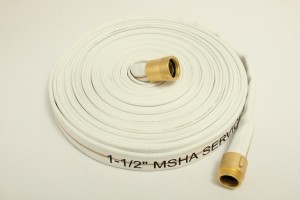
MSHA hose for mine applications
MSHA (Mine Safety and Health Administration)-approved hose is another type of single-jacketed hose. MSHA hose meets certain specifications and has the ability to self-extinguish when a flame source is removed. The lining of a MSHA hose is made of synthetic rubber, which does not produce toxic gases when ignited..
3. Mill Discharge
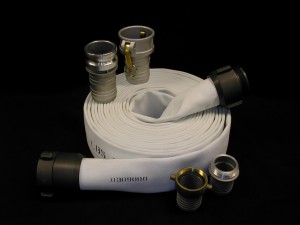
Mill discharge hose available in single or double jacket.
The mill discharge hose is sometimes also called the contractor hose. The mill discharge hose comes both single jacketed and double jacketed.
Though similarly constructed to regular single and double jacket hoses, these variations have a slightly lower pressure rating. Often times, construction sites, parks, or agriculturists will employ these hoses for undemanding purposes such as watering crops, draining a pond, or simply transferring water from point A to point B. (It is important to note that for washdown purposes, a rubber-covered hose is the way to go.)
Single Jacket Hose FAQ
Q: What is a single jacket hose?
A: Single jacket fire hose has a single layer of spun polyester fibers wrapping the rubber hose.
Q: What is the difference in single jacket and double jacket fire hose?
A: Both single and double jacket hose feature woven jackets of ring-spun polyester yarns that resist abrasion, mold, and mildew.
Double jacket hose features an extra layer of woven fabric that boosts durability, making it a good choice for repeated use in high-wear situations.
Q: How do I choose between a single or double jacket hose?
A: The answer depends on your application. For example, double jacket hose is a good choice for repeated use in high-wear situations.
On the other hand, the flexibility of single jacket hose makes it ideal for prolonged storage and temporary or periodic use. These can include industrial washdown applications and fire emergencies in commercial buildings.
Examine the use, frequency, location, and durability requirements of your intended application when choosing between single jacket and double jacket fire hose.
-
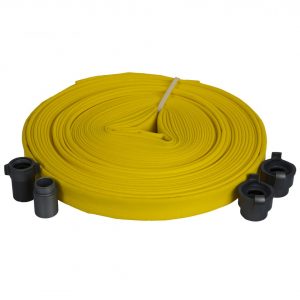
1-1/2″ Forestry Hose Type 2 600 LB Test
$143.00 – $394.00 -
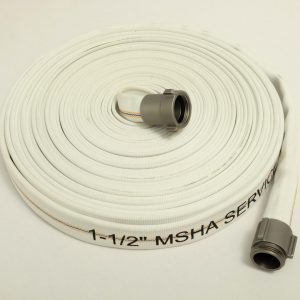
1-1/2″ MSHA Single Jacket Fire Hose (600 LB Test)
$183.00 – $406.00 -
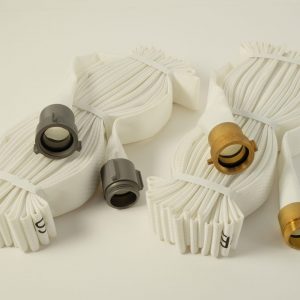
1-1/2″ Rack Fire Hose (500 LB Test)
$79.00 – $200.00 -
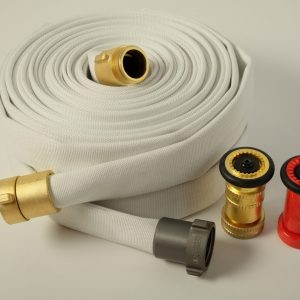
1-1/2″ Reel Fire Hose (500 LB Test)
$89.00 – $210.00 -
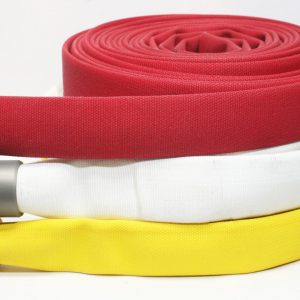
1-1/2″ Single Jacket Fire Hose (500 LB Test)
$115.00 – $316.00 -
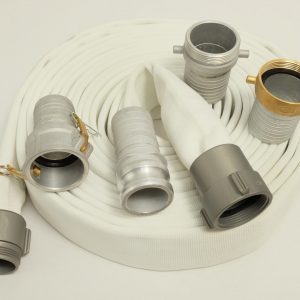
1-1/2″ Single Jacket Mill Discharge Hose (250 LB Test)
$105.00 – $252.00 -

1″ Forestry Hose Type 2 600 LB Test
$124.00 – $356.00 -
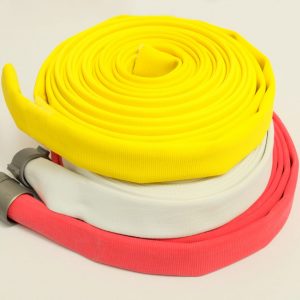
1″ Single Jacket Fire Hose (500 LB Test)
$106.00 – $280.00 -

1″ Single Jacket Mill Discharge Hose (250 LB Test)
$83.00 – $208.00 -
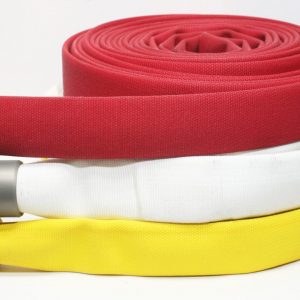
2-1/2″ Single Jacket Fire Hose (500 LB Test)
$178.00 – $563.00 -

2-1/2″ Single Jacket Mill Discharge Hose (250 LB Test)
$127.00 – $337.00 -

2″ Single Jacket Fire Hose (500 LB Test)
$158.00 – $451.00
